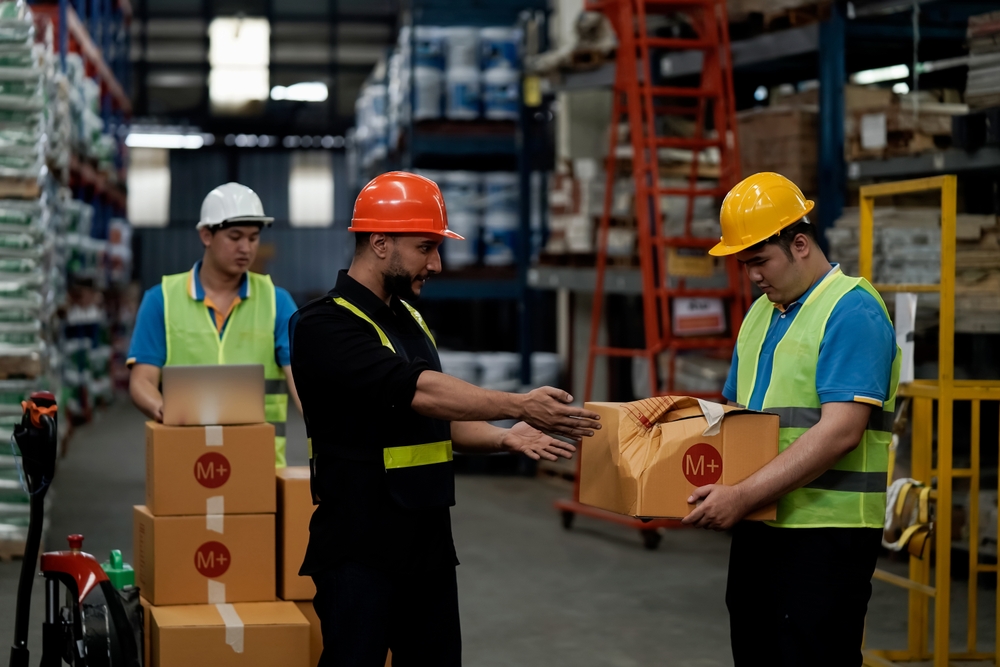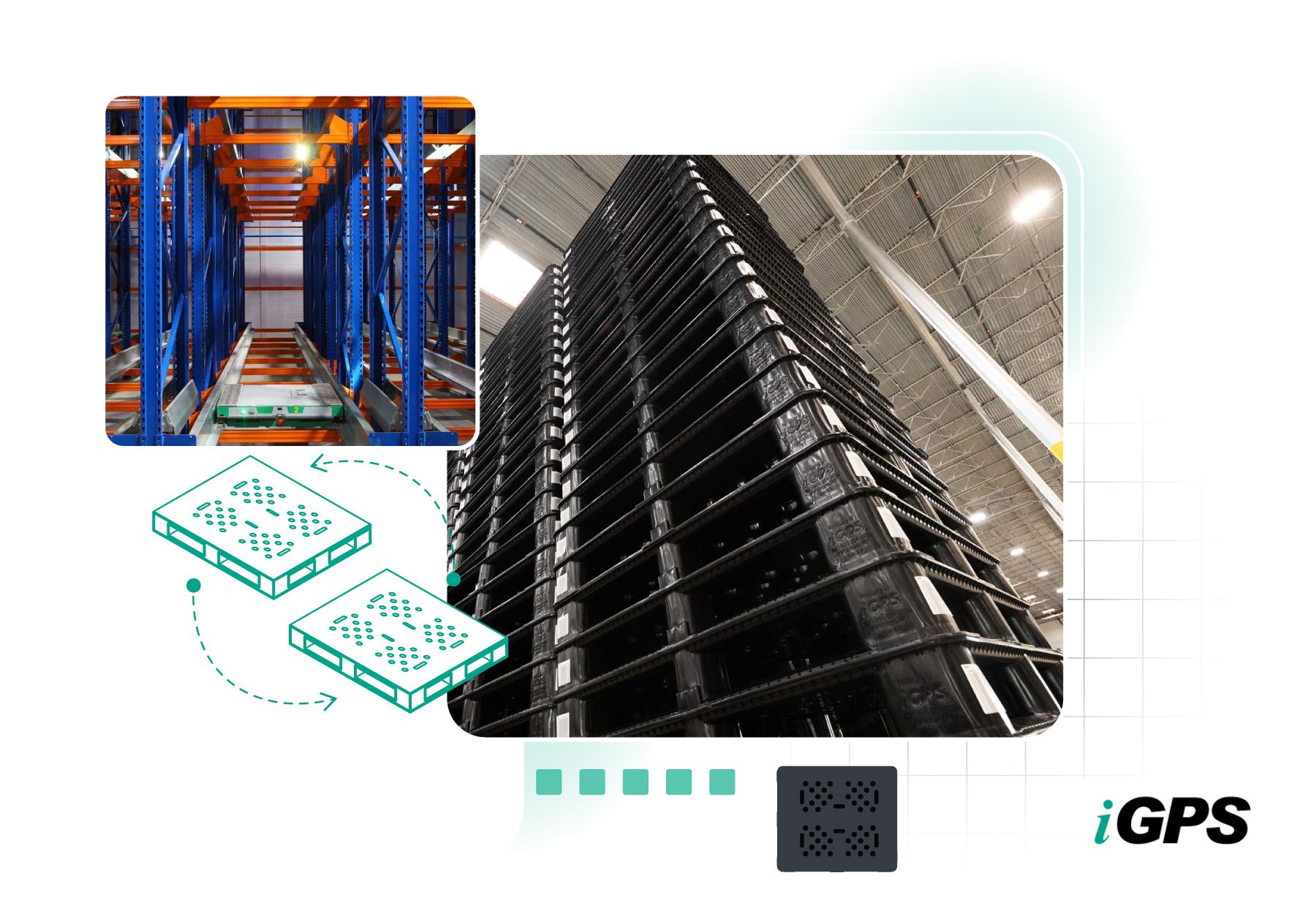Key Takeaways
- Damaged products in a warehouse are more than a nuisance; they are a direct hit to a company’s bottom line.
- Reducing damage not only stems financial losses but also helps maintain customer trust.
- Strategies to reduce product damage in a warehouse include using plastic pallets, implementing employee training programs, and conducting pallet inspections.
- Adding warehouse lighting and using proper equipment are also important to reducing the risk of product damage.
When it comes to running a sufficient and profitable supply chain operation, damaged goods are more than a nuisance — they are a direct hit to an enterprise’s bottom line. From the costs of lost inventory, cleanup, and potentially damaged customer relationships, the consequences of product damage can be significant. This makes strategies to reduce damage not only a smart best practice, but also an essential business imperative.
Why Is It Important to Reduce Product Damage in Warehouses?
The downside of product damage in a logistics environment results in more than just immediate financial losses due to unsellable inventory. If the damage occurs in the facility, then time and expense must be invested in cleanup; if it occurs in transit, then trust and reputations are undermined with customers. In fact, the damage to the lifetime value of a customer exceeds the cost of the product damage itself.
Damaged inventory, as well as damaged shipping platforms such as pallets, can also pose a risk to both warehouse equipment and employees. In regulated industries such as food and healthcare, product damage can lead to potential compliance violations and liability. And ultimately, any time spent dealing with damaged products is time taken away from productive activities that drive the business forward. For all these reasons, taking steps to minimize damage means that supply chain managers will maintain a safer, more profitable, and more efficient operation.
11 Strategies to Reduce Product Damage in Your Warehouse
While some occasional damage may be unavoidable, implementing certain prudent strategies can significantly reduce a company’s risk of facing damage-related losses while ultimately improving the overall performance of a facility.
1. Use Plastic Pallets
Plastic pallets, such as those offered by iGPS logistics, are a safer, greener, and more durable alternative to traditional wood-block pallets — especially in industries in which cleanliness and product integrity are vital, such as the food and healthcare verticals. Their benefits are numerous:
- No protruding nails, splinters, or broken boards that can puncture packaging, contaminate products, and possibly injure workers
- Consistent size and dimensions that reduce the possibility of jamming in racking systems and automated equipment
- Moisture-resistant and hygienic, with a non-porous surface that does not absorb moisture or harbor pathogens
- Longer lifespans — in some cases, as much as four times as durable as wood (actual, not lab-tested)
Plastic pallets are also lighter than wood and recyclable, making them a more environmentally sustainable solution.
2. Improve Employee Training
Even the most sophisticated logistics setup won’t prevent product damage if workers aren’t up to date on the latest training protocols. Efforts should focus on topics that include safe lifting and handling techniques, proper use of equipment like pallet jacks, secure stacking and wrapping of pallets, and recognizing and reporting damage and other hazards.
Training is not a one-time event. A regular cadence of both new training and refresher courses should be ingrained in every warehouse’s culture .
3. Conduct Thorough Pallet Inspections
While we recommend plastic, regardless of what material you use, pallets should be routinely inspected before use. Cracks, warped or broken boards, protruding nails, or missing support blocks could lead to toppled loads that not only damage products but also threaten workers and equipment. Establish a simple checklist to look for things like structural integrity, load-bearing capacity, and overall cleanliness.
4. Add Proper Warehouse Lighting
There are links between poor facility lighting and the frequency of workplace accidents. Not only can accidents like trips and falls occur more frequently, but workers in poorly lit environments are also less likely to spot broken pallets, shifting loads, or hazards on the warehouse floor. Facility managers that invest in bright, energy-efficient lightning in areas that include aisles, loading docks, and picking and staging areas minimize product damage and safety risks. Motion-sensor lighting can also help improve visibility while adding the benefit of reduced energy costs.
5. Avoid Overloading
Every rack, piece of equipment, container, and pallet in a warehouse has a rated load capacity. For instance, an iGPS plastic pallet can hold 2,800 pounds edge-rackable (see Pallet Spec Sheet). An iGPS plastic pallet is also capable of supporting an evenly distributed static load of 30,000 pounds at rest and a 5,000-pound evenly distributed dynamic load when in motion. Exceeding these limits can increase the risk of both product damage and worker injury.
Clearly mark load limits on racks and forklifts and make sure that staff are trained on how safely to estimate weight distribution. For high-volume operations, load calculation software can eliminate much of the guesswork.
6. Use Proper Material Handling Equipment
Attempting to move heavy or oversized loads using the wrong equipment is a certain recipe for disaster. It is vital to ensure that warehouse teams have access to the proper equipment, and that operators are properly trained on equipment that includes:
- Forklifts
- Pallet jacks
- Conveyor systems
- Wrapping machines
- Hoists and cranes
While investing in the proper equipment may carry higher up-front costs, the long-term benefits of minimized risk for worker injury and product damage more than justify the expense.
7. Reduce Manual Handling
The more manual touchpoints are typically involved in a product’s moving and handling, the more chances it has to be dropped or crushed. Savvy warehouse operators identify ways to limit manual handling, including the implementation of conveyors and automated storage and retrieval systems, the use of shrink-wrapping and stretch-wrapping to secure loads, and the consolidation of order picking to reduce the need for products to be rehandled continuously. Automated systems aren’t perfect, but they will typically lead to fewer errors and less breakage.
8. Weatherproof Your Warehouse
Warehouse managers often think first of noisy and obvious threats, like an improperly steered forklift careening into a storage rack. But moisture and temperature are quiet saboteurs, which over time can result in damaged packaging, the presence of mold and rust, and weakened warehouse infrastructure.
To minimize the possibility of product damage due to weather-related issues, follow these common-sense tips:
- Seal windows and entrances to prevent drips and leaks
- Use climate control or dehumidifier systems in sensitive storage areas
- Store high-risk and perishable inventory off the ground and away from exterior walls
Using plastic pallets is also a great way to weatherproof a logistics facility. They do not absorb moisture, which can warp wood and make it easier for its porous surface to harbor mold and pathogens.
9. Rearrange the Warehouse for Maximum Productivity
A cluttered warehouse layout can lead to careless handling and inefficient operation of AGVs and other automated equipment, potentially increasing the risk of costly damage to goods as well as pallets and equipment. Identify ways to streamline and optimize your facility’s layout; for example, by creating clearer traffic lanes for forklift and personnel, using vertical space more efficiently to avoid overcrowding, and ensuring that high-turnover items are placed near loading areas. A layout that is focused on efficiency and productivity does more than save time and money — it also reduces the chances of mishaps.
10. Standardize Aisle Sizes
Inconsistent aisle widths within a logistics facility can lead to navigation challenges, especially for AGVs, forklifts, and pallet jacks. Narrow or cluttered aisles can increase the chances of damaged racking and toppled stacks. This is why it is important to establish and maintain clear protocols for minimum aisle width as well as buffer zones around high-traffic corners. Other improvements can include the implementation of one-way aisles, when possible, to reduce congestion and the possibility of collisions. This standardization promotes smoother flow of traffic and activity .
11. Follow a Routine Cleaning Schedule
Lastly, it is essential that facilities be kept clean and tidy at all times. Spills, clutter, and debris, such as broken nails and splinters from wood pallets, can create tripping hazards, obstruct or damage equipment, and create other issues that may contribute to product damage. Daily warehouse tasks should include cleaning up aisles and picking and packing areas, picking up debris such as packaging remnants and broken wood pallet pieces, removing damaged pallets and skids, and immediately mopping up any spills that should occur. A clean warehouse is more than just a good way of keeping up appearances — it is crucial for both worker safety and the integrity of stored goods.
A resilient supply chain is one in which risks are mitigated, including the risk of product damage. Every dented package, broken seal, or contaminated load can chip away at an organization’s efficiency, reputation, customer satisfaction scores, and profit margins. By making thoughtful investments in training, infrastructure, and smart shipping platforms like iGPS plastic pallets, supply chain leaders can create safter and more optimized work environments that protect people, equipment, and products.
How can companies reduce product damage in a warehouse?
Companies can reduce product damage by investing in proper employee training, using high-quality materials like plastic pallets, maintaining organized and well-lit workspaces, and implementing automation where possible. Regular inspections, clear load guidelines, and thoughtful warehouse layouts also play a critical role in minimizing accidents and preserving inventory integrity.
What are the best ways to deal with damaged products?
The best approach to handling damaged products is to establish a clear process that includes immediate isolation of affected items, documentation of the damage, root cause analysis, and disposal or return procedures based on the product type. This ensures safety, accountability, and continuous improvement across warehouse operations.
What are effective strategies to reduce product loss?
Reducing product loss requires a combination of inventory accuracy, security measures, and operational discipline. Strategies include routine cycle counts, real-time tracking systems, employee accountability, and minimizing handling steps. Loss prevention also benefits from consistent process audits and using durable, standardized storage solutions to reduce errors and damage.
Companies focused on reducing product damage in the warehouse rely on durable iGPS plastic pallets for their shipping needs. iGPS pallets are lighter and safer than wood, without nails and splinters. For more information, contact us at 1-800-884-0225, email a specialist at switch@igps.net, or visit our contact page.



